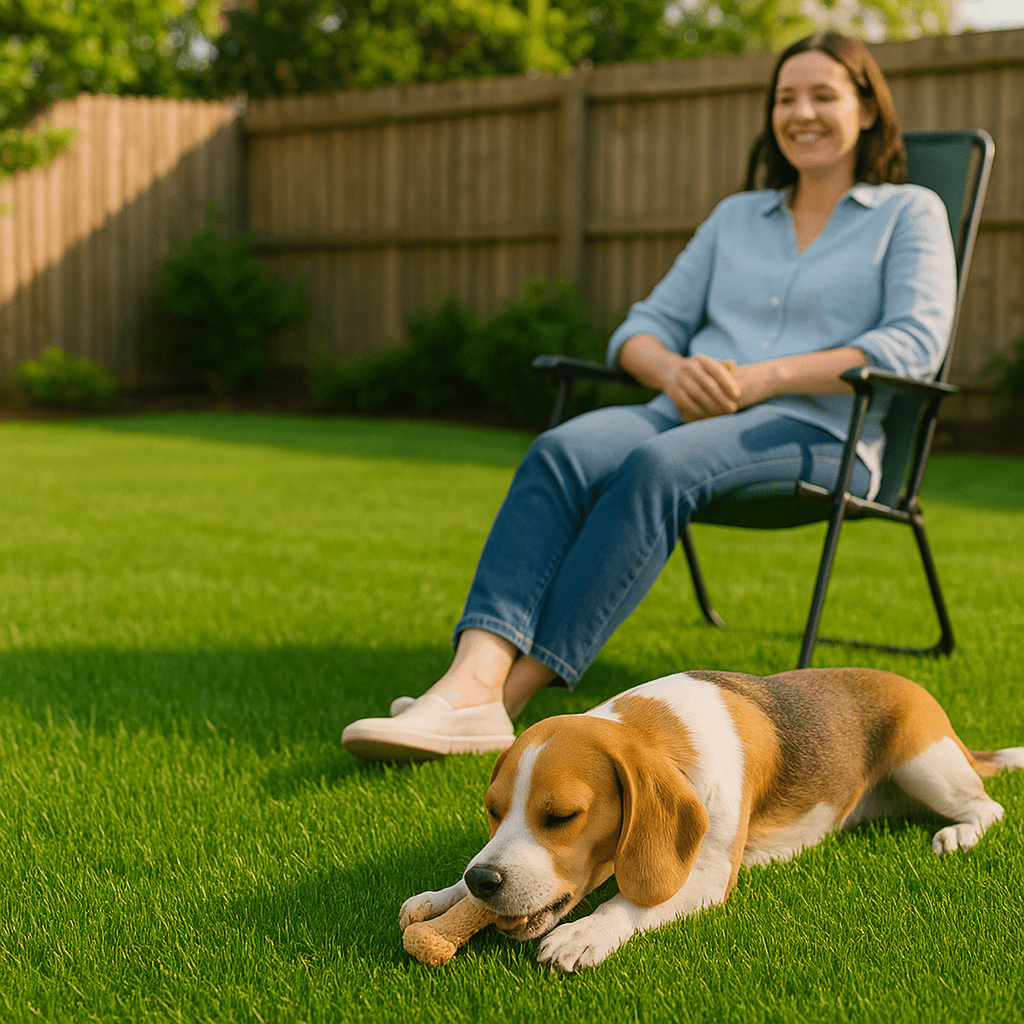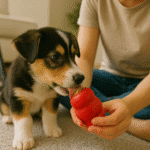The Canine Archaeologist: Why Your Dog Is Digging Up Your Yard (And How to Fix It)
You look out at your once-pristine lawn and see a battlefield. Craters pockmark the landscape, mountains of fresh dirt pile up near your prize-winning roses, and there, in the center of it all, sits your dog—nose caked in mud, paws filthy, wearing an expression of pure, unadulterated bliss. If this scene is familiar, you’re the proud owner of a Canine Archaeologist, a dog whose greatest passion is excavation. While their enthusiasm is admirable, the destruction can be maddening. But before you despair, it’s crucial to understand that your dog isn’t digging to spite you; they are answering a deep, ancient instinct.
Trying to stop a dog from digging without understanding the “why” is like patching a leaky roof in a rainstorm. You have to find the source. This guide will help you decode your dog’s motivation and provide a humane, effective blueprint to channel that digging passion into a healthier outlet. It’s time to work *with* your dog’s nature, not against it, to achieve the ultimate dream: a happy dog and a happy lawn.
Cracking the Code: The Top 5 Reasons Your Dog Digs
Your dog’s digging is a message. By figuring out what they’re trying to say, you can find the right solution.
1. The Denning Instinct
For millennia, canids have dug dens for safety, comfort, and a secure place to raise their young. This instinct is still very much alive in our domestic dogs. They may dig a shallow pit in a cool, shady spot to create a comfortable place to lie down. This is especially common in Nordic breeds like Huskies but can be seen in any dog.
2. The Hunt for Buried Treasure (or Pests)
A dog’s incredible sense of hearing and smell can detect critters moving underground. If your dog is digging frantically at the base of trees or in a specific line across the yard, they are likely hunting for moles, voles, or insects. To them, it’s not destruction; it’s a thrilling hunt.
3. The Personal Climate Control System
On a hot summer day, your dog might dig a pit to lie in the cooler soil underneath the top layer of grass. Conversely, in colder weather, a shallow hole can provide a bit of insulation from wind and frost. It’s their own natural, energy-efficient HVAC system.
4. The Ultimate Boredom Buster
This is one of the most common reasons for unwanted digging. A dog without enough mental and physical stimulation will invent their own fun, and digging is an incredibly entertaining and self-rewarding activity. It engages them physically and mentally. If your dog is left alone in the yard for long periods with nothing to do, they will likely take up landscaping as a hobby.
5. The Great Escape Artist
If the digging is focused along a fence line, your dog is likely trying to escape. This can be driven by boredom, the desire to chase something on the other side, or separation anxiety. This is the most urgent type of digging to address, as it poses a significant safety risk.
Your Blueprint for a Better Yard: The 4-Step Solution
Punishing your dog by yelling or forcing them to look at the hole after the fact is ineffective. They won’t connect the punishment with the past action and it can create fear. Instead, use this proactive, positive approach.
Step 1: Increase Their “Paycheck” (Exercise & Enrichment)
The first step is to tackle boredom. A tired dog is a dog that is less likely to have the surplus energy to dig. Ensure they are getting enough physical exercise (brisk walks, swimming, fetch) and, just as importantly, mental exercise. Introduce puzzle toys, play training games, and work on a “sniffari” walk (see our Enrichment blog post!). A dog whose needs are met is far less likely to seek out destructive hobbies.
Step 2: Create a “Legal Digging Zone”
This is the most effective and humane solution. Don’t fight the instinct—redirect it! Create an approved digging area for your dog.
- Choose a designated spot in your yard. You can build a simple frame with wooden planks or just section off a corner.
- Fill it with a fun-to-dig material like sand or loose, fresh soil.
- Make this spot a treasure chest! Bury your dog’s favorite toys, chews, and some smelly, high-value treats just under the surface.
- Lead your dog to the box and encourage them to dig, praising them lavishly when they find a prize. They will quickly learn that *this specific spot* is where all the best things are buried.
Step 3: Make the “Illegal” Spots Unattractive
While you’re building up the value of the dig box, make their old favorite spots less appealing. You can place large, flat rocks over the holes, or bury their own poop in the hole (dogs generally find this unpleasant and won’t want to dig there). Some owners have success with citrus peels or cayenne pepper sprinkled in the area, but these can be irritating, so use them with caution.
Step 4: Supervise and Redirect
During this training period, you cannot allow your dog to be unsupervised in the yard. You must be out there with them to manage their choices. The moment you see them start to dig in an unapproved area, interrupt them with a firm but cheerful “Ah-ah!” and immediately guide them to their legal dig box. When they start digging there, reward them with praise and treats. You are showing them, in real-time, the “wrong” choice and the “right” choice.
Conclusion: Work With Your Dog’s Nature, Not Against It
Your dog’s digging is not a personal attack on your landscaping skills. It is a powerful, natural instinct crying out for an appropriate outlet. By understanding the root cause—whether it’s boredom, comfort, or the thrill of the hunt—and redirecting that incredible energy into activities like enrichment and an approved dig box, you can solve the problem for good. You’ll not only save your lawn, but you’ll also create a more fulfilled, stimulated, and happier companion, and that’s the ultimate goal of dog wellness.







